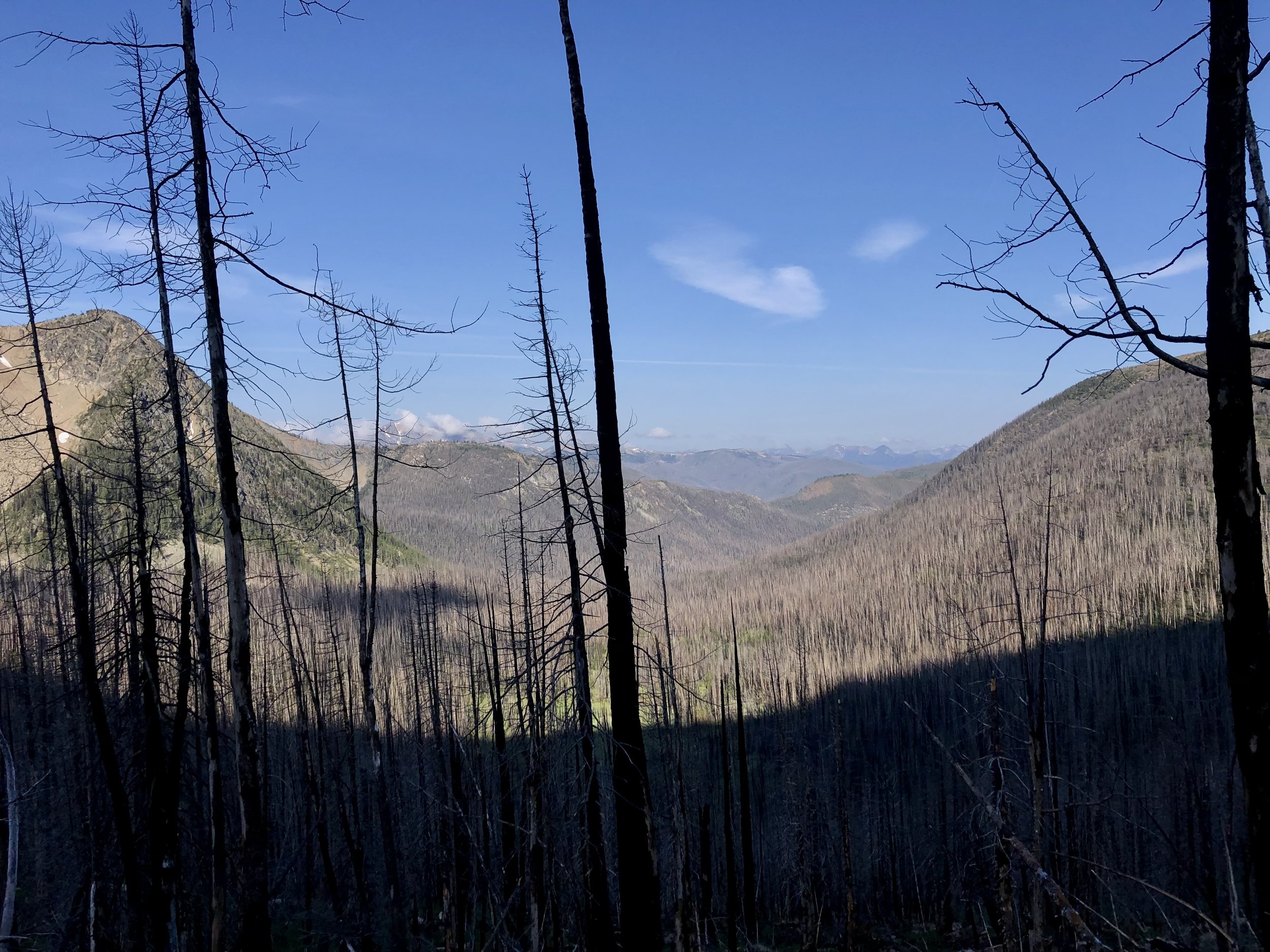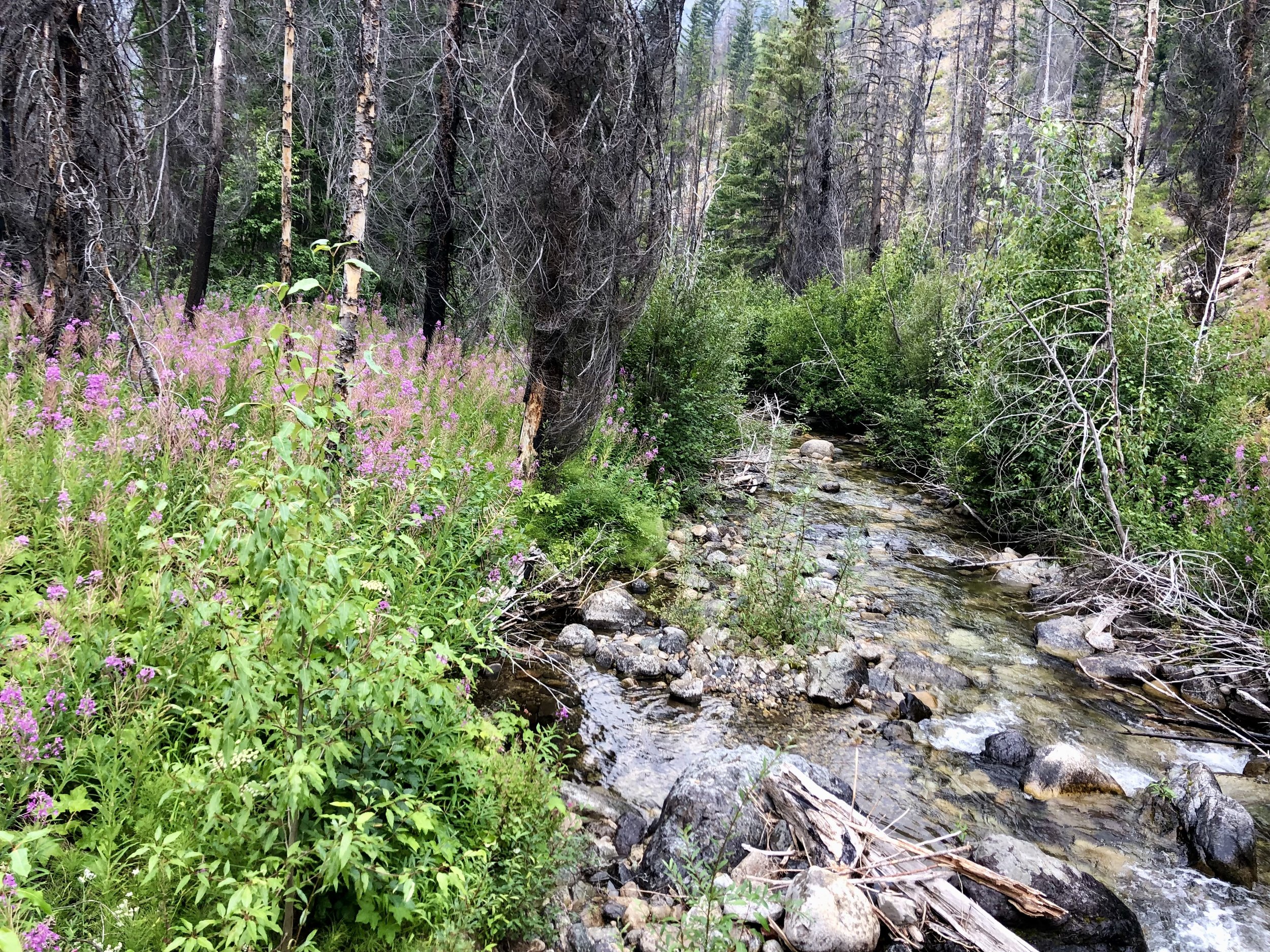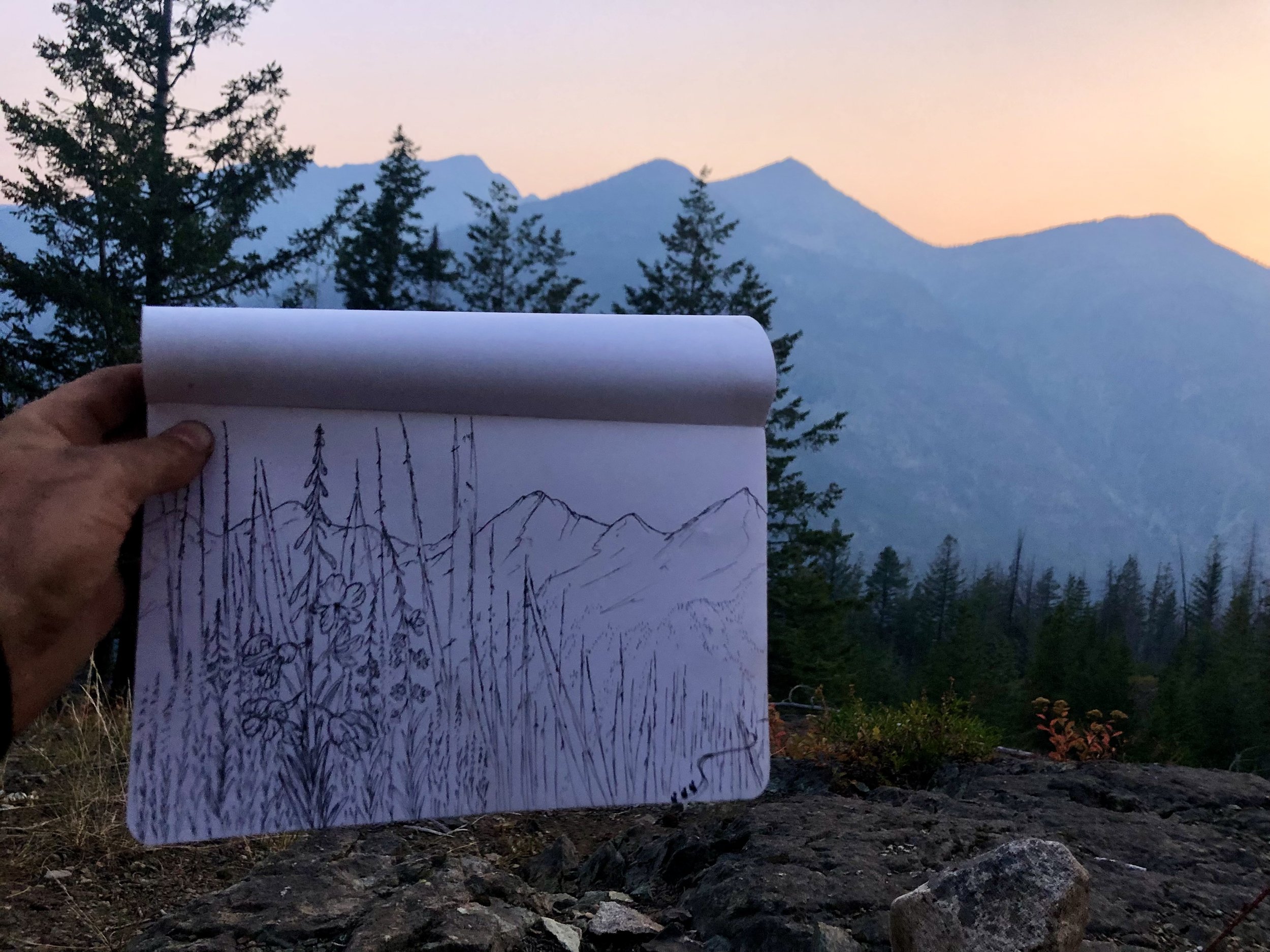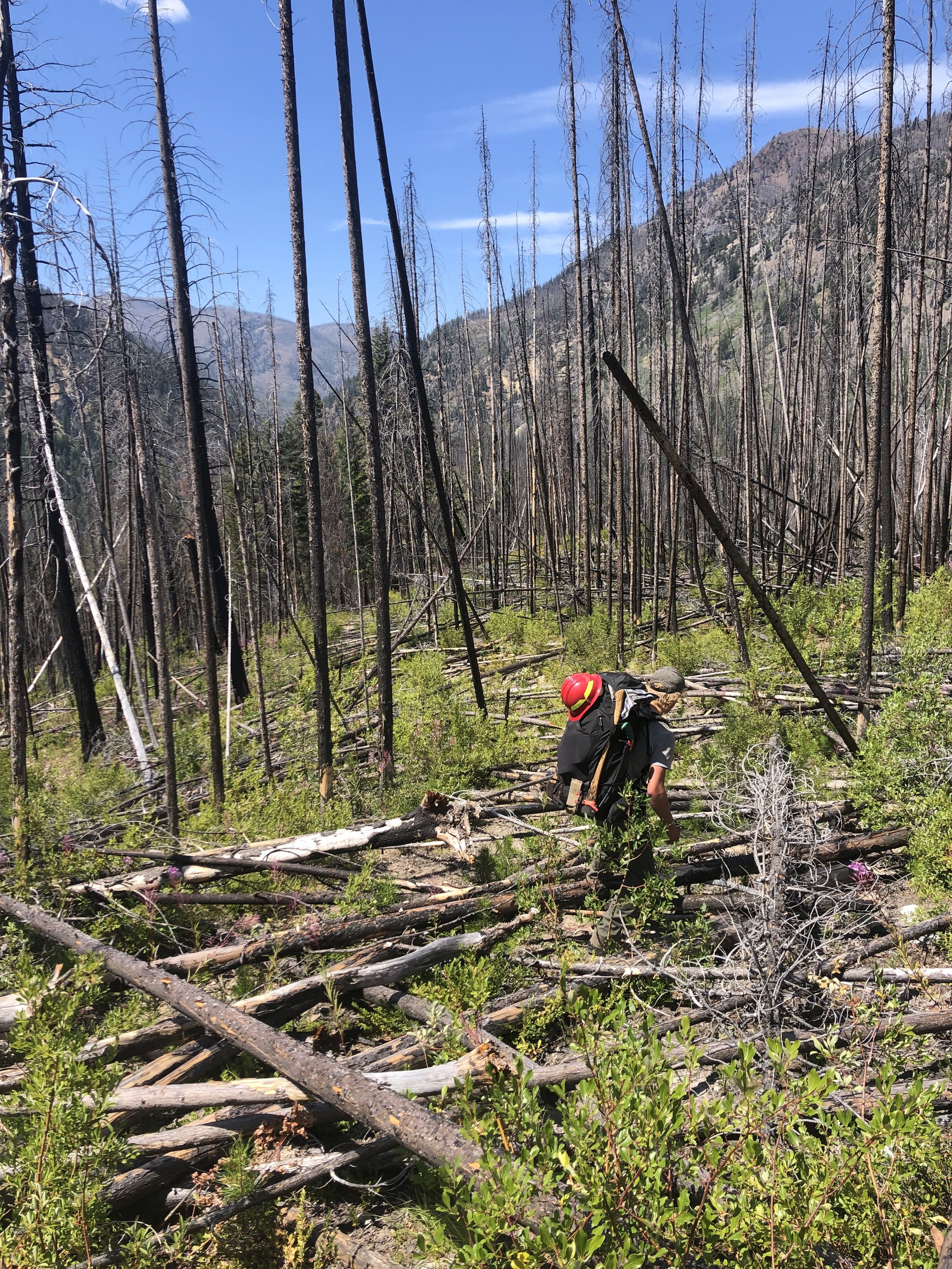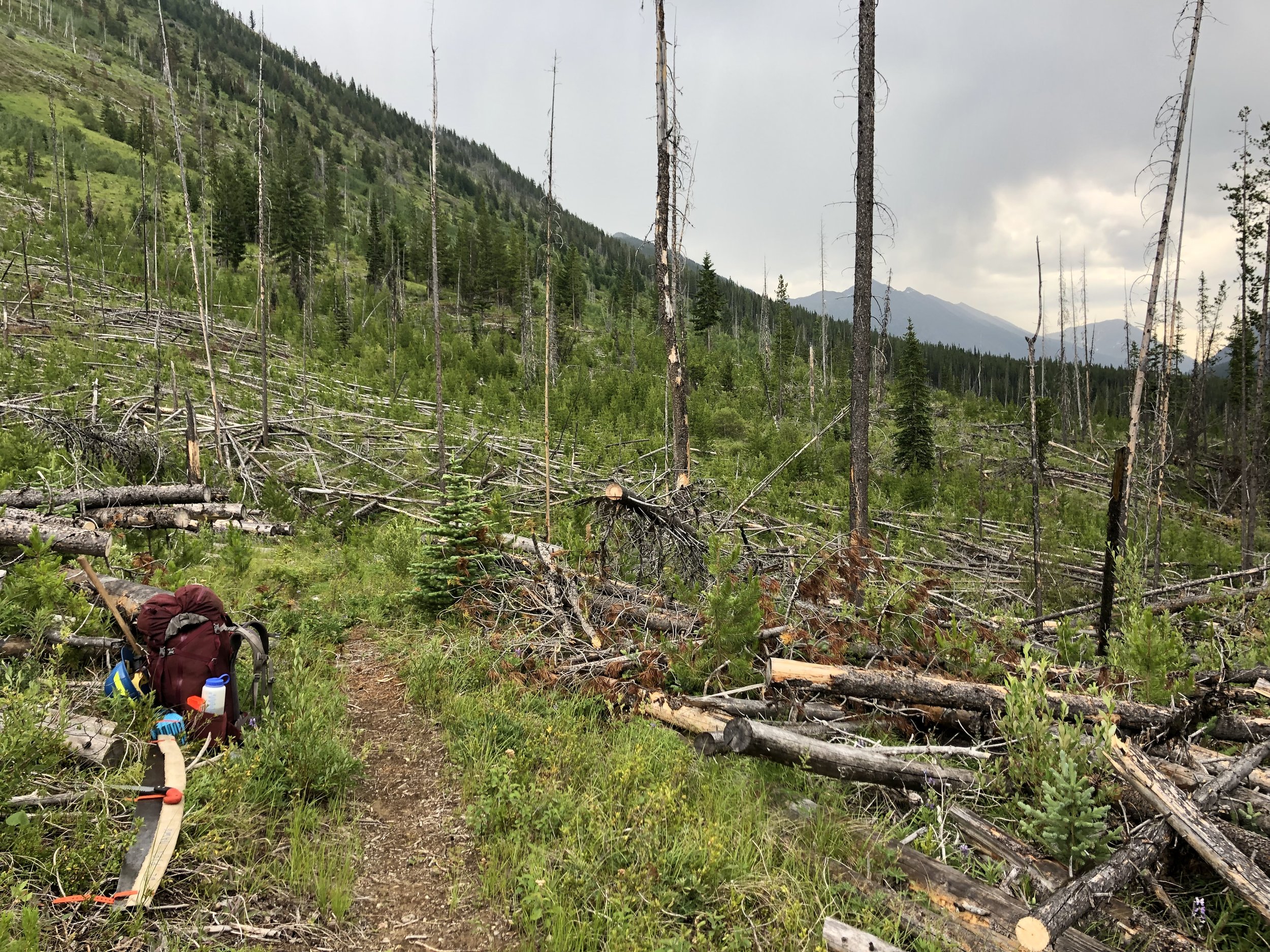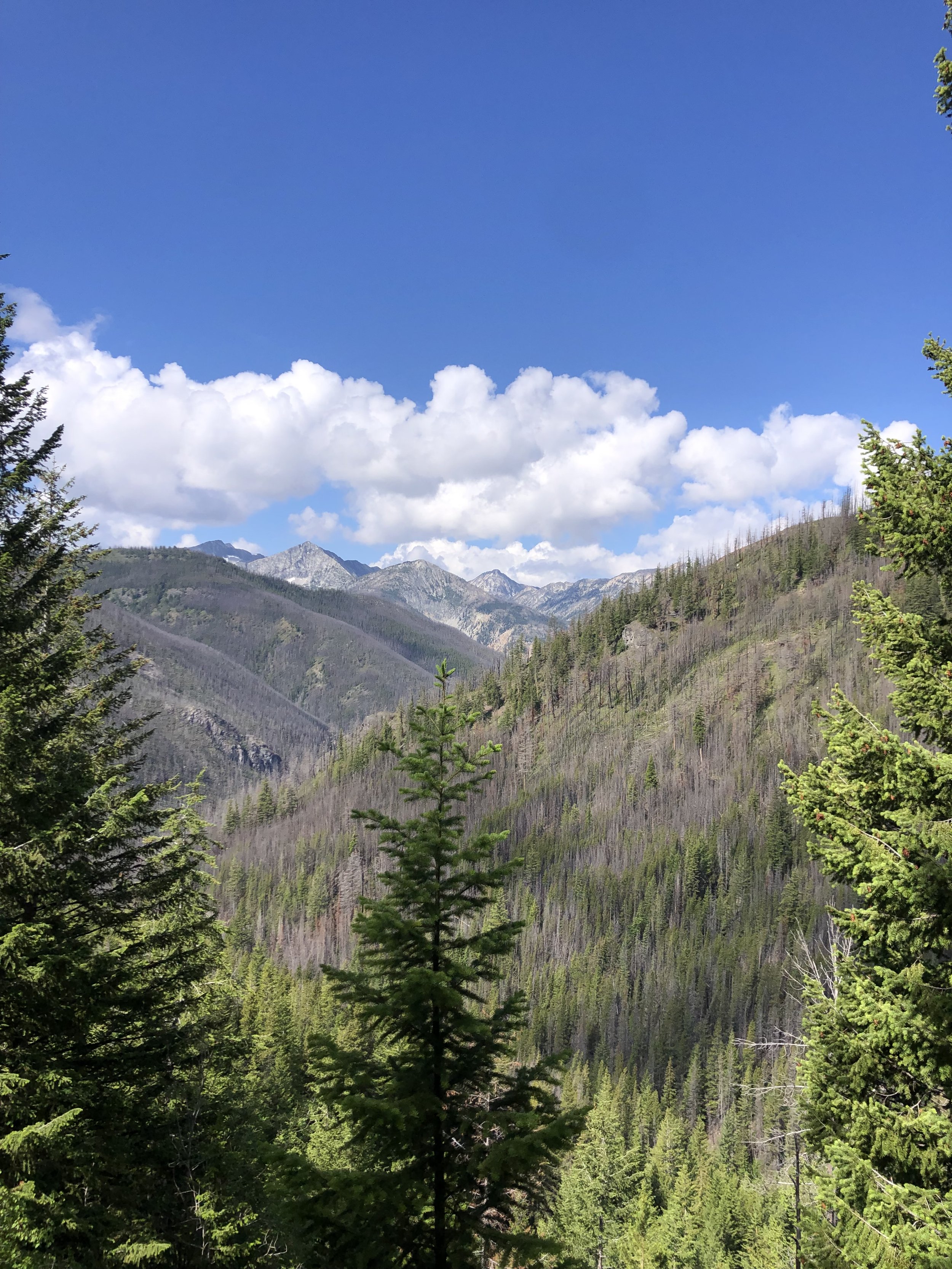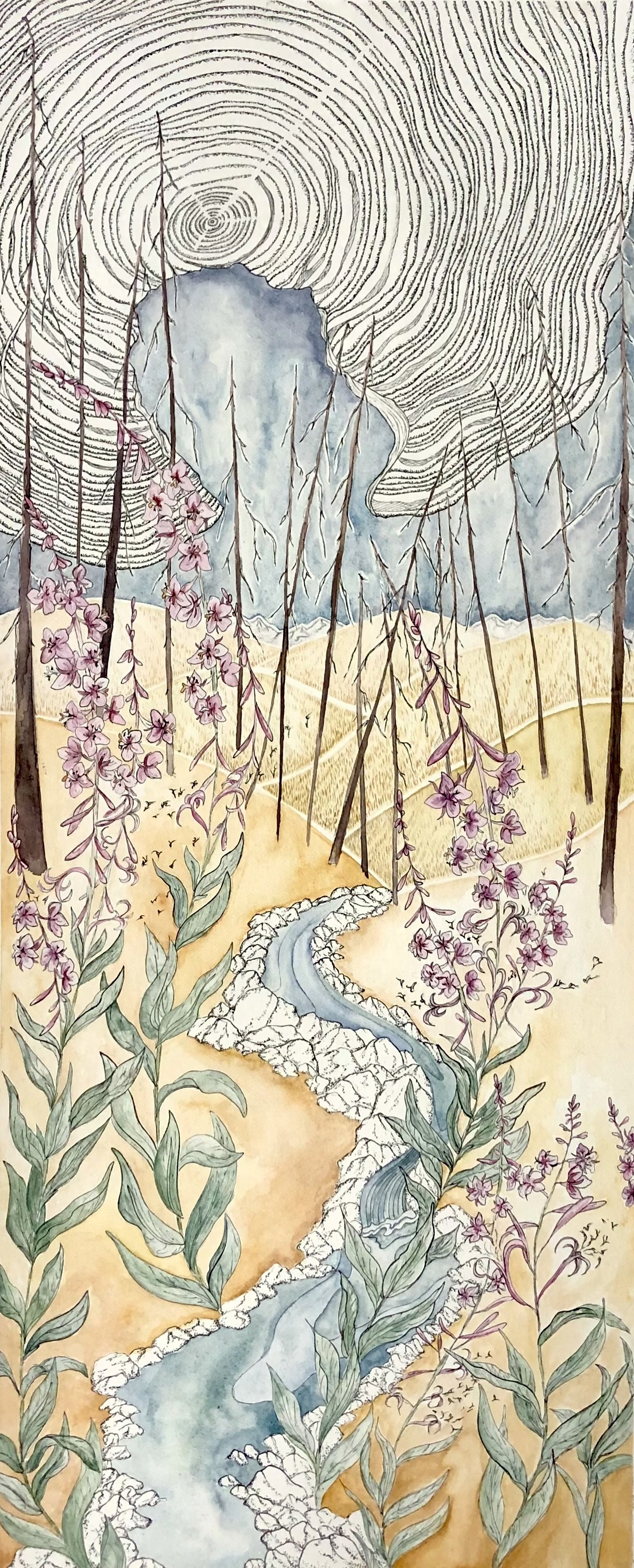Pasayten
Watercolor on cotton rag
Original 10”x22.5”
$350 (not framed)
Inspired by
an unfamiliar landscape
I I held this composition in my head for most of my summer spent working on a Forest Service trail crew in the Pasayten Wilderness. Myself and the crew were responsible for wilderness log-out projects, spending up to 8 days at a time backpacking and clearing trail.
The Pasayten burns often. As you move through the landscape the green forest turns brown, black, then brown again. I spent a lot of time walking and working in these burned areas, my hands and clothes would be covered in sparkly charcoal from cutting and moving burnt trees.
Living a majority of my life on the west side of the Cascade range these burnt landscapes were unfamiliar. I remember hiking towards Larch Pass. I turned to the rest of my crew and said, "I've never seen so many dead trees before", they laughed. Most of them had a few years of experience working in the Pasayten, this was nothing new for them.
These burnt landscapes tell stories, the snags are creaky and fall down often (usually across the trail). When the wind moves through them it whistles loudly. There are holes in the ground where a tree used to stand. When I kept a careful eye I could notice where the fire burned hot and where it may have been less intense.
The forest seemed to waste no time after a burn to mourn the loss of what was there before, instead, the plants take advantage of new nutrients that are now abundant in the soil. Bright green shoots and stems created a beautiful contrast against the charred earth. Lodgepole sapling shoot through piles of logs and the pink flowers of fireweed fill the spaces between blackened trees.
I wonder if these once unfamiliar landscapes are creeping west over the crest of the Cascades as our climate warms, and I wonder how we can adapt our fire management to our changing climate.
